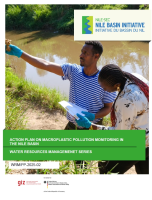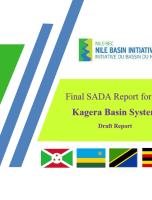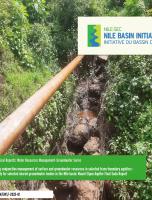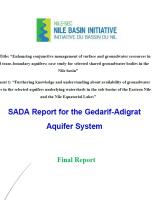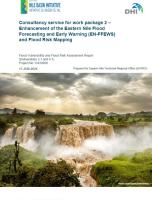Abstract
This study seek to build the economic case for wetland conservation and wise use, with a
specific focus on generating evidence on the economic value of wetland as ‘green’ water
infrastructure. By so doing, it intends to bring wetland ecosystem values to the attention of
river basin planners and managers, and to thereby promote better-informed, more effective,
inclusive, equitable and sustainable conservation and development decision-making. It is
also good to appreciate that instrumental economic value obtained from ecosystem services is
only one constituent of the comprehensive value of a wetland environment, and that the
intrinsic value of nature also provides a case for the conservation a wetland ecosystem and its
biodiversity. The main objective of this study is to generate information on economic value
of the Sio-siteko wetland ecosystem services to inform the development of conservation
investment plans
The Sio-Siteko wetland system spans the Kenya-Uganda border. It traverses Busia district in
Uganda and Busia County in Kenya and is part of the wider Sio-Malaba-Malakisi catchment
(World Bank, 2009). In this study, the wetland’s size is regarded to occupy an area of 60 𝑘𝑚2
based on the 2019 Sio-siteko wetland monograph which shows that the wetland size is
slightly under than 60 𝑘𝑚2
. In this study, only sub locations and parishes that border the
wetland in Kenya and Uganda respectively have been considered as the buffer zone with
direct influence on the wetland resource use. These include thirteen parishes (South East,
Central, South West, Nangwe, Buyengo, Buhehe, Bulwenge, Budimo, Lumino, Junge,
Dadira, Bumunji, and Majanji) in Uganda and sixteen sub locations (Busijo, Agenga,
Bujwang’a, Sigalame, Luchululo, Luanda, Buloma, Lugala, Ludacho,Mango, Sibinga,
Nang’oma, Muyafwa, Mundika, Mayenje, and Mjini in Kenya (NBI, 2009). However, in the
household survey, sub locations and parishes in Busia towns of Kenya and Uganda were
excluded since the study mainly focused on production and urban dwellers were viewed as
more likely to be consumers.
